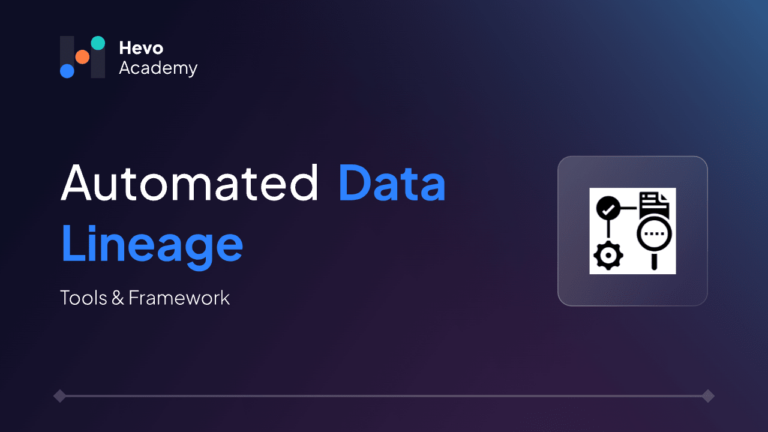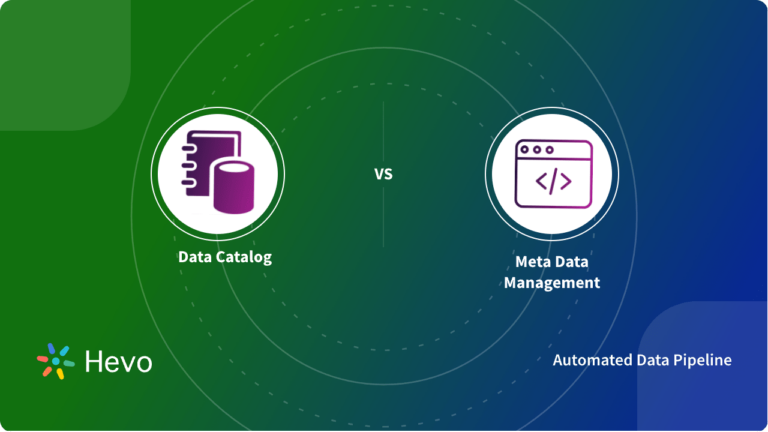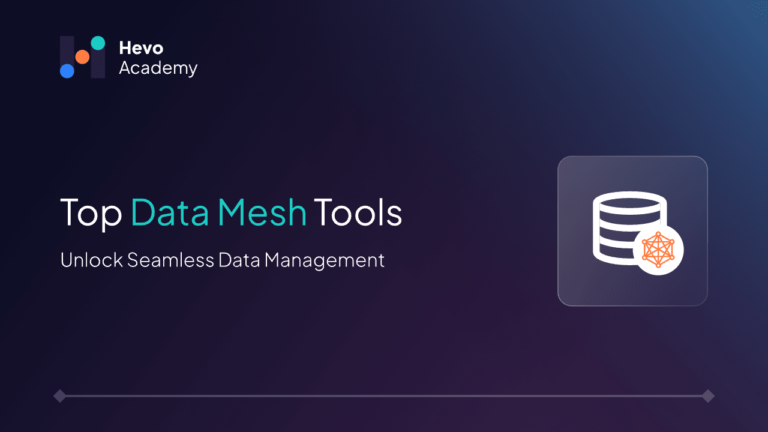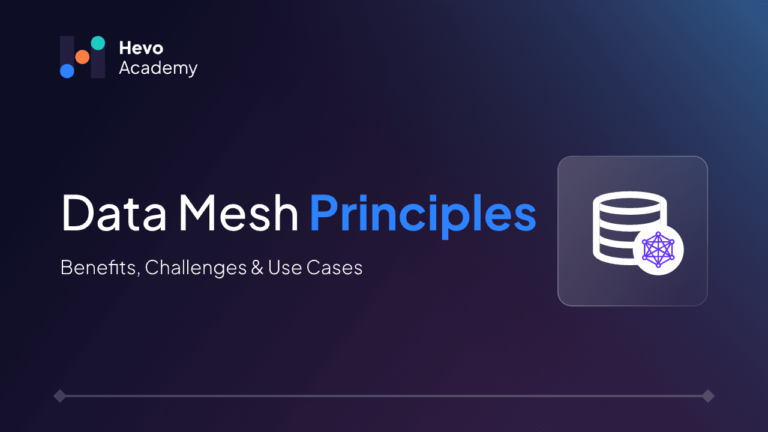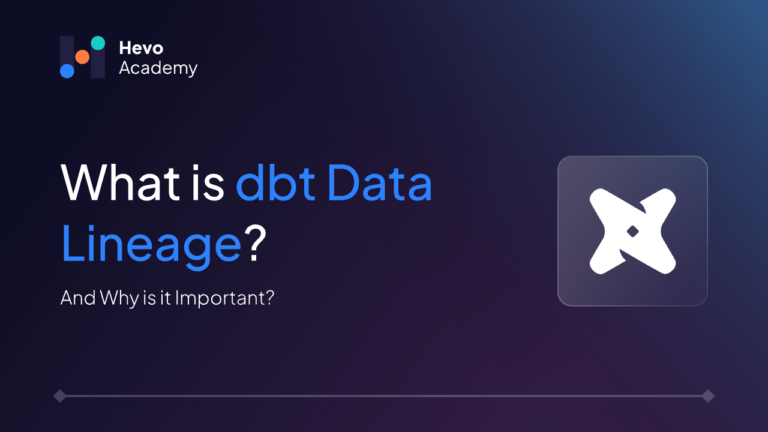Modern businesses define today’s economy, as a wide array of business processes are closely associated with the utilization of data. Yet, due to the complexity of data ecosystems, it is becoming increasingly difficult to capture and govern data. Automated Data Lineage is a problem-solving tool that ensures institutions can accurately, transparently, and compliantly track information across systems. In this blog, we will review basic information about Automated Data Lineage, Traditional Vs Automated Data Lineage, its advantages in businesses; as well as practical uses of Automated Data Lineage. We will also look at the implementation tools for successful adoption of this framework.
Table of Contents
What is Automated Data Lineage?
Data lineage is the process of identifying data and comprehensively documenting its movement and transformation from its original location to various subsequent locations and its after effects. It affords a good account of how information is generated, processed and utilized in various systems and processes.
Automated Data Lineage extends this notion a step further whereby the tool and technology self-acquire, record, and map data without human input. This automation definitely helps in managing the complexities of the data and the processes that transform or generate such data by providing a clear trail of origins, transformation, relations, and dependencies.
What are the Key Features of Automated Data Lineage?
- Automated Data Mapping: Automatically identifies data flowing through an application or system and maps them.
- Visual Representation: Provides graphical models for data flow and transformations which helps from understanding of them.
- Impact Analysis: Indicates how data changes affect the next process.
- Compliance and Auditing: Oversees compliance through data usage records that can be tracked and referred to at any time.
- Anomaly Detection: Notifications about dark data patterns or changes, improving data quality.
Benefits of Automated Data Lineage
- Enhanced Data Governance: Automated data lineage provides the means by which data sources and transformations are captured as an audit trail, and assists in the management of data quality and compliance.
- Improved Data Quality: It allows one to detect deviations from normalcy, error, or even inconsistency in the input, process, output, or storage, hence increasing the usage of accurate data. Effective metadata governance supports automated data lineage by establishing standards for metadata accuracy, ensuring reliable tracking and data transparency.
- Faster Impact Analysis: An appropriate CCPM provides businesses with insight into data dependencies and consequently determine both the risks posed by changes in the data source or process as well as the time wasted waiting for data.
- Increased Operational Efficiency: Automating an otherwise time-consuming process distills documentation effort and lineage management so that teams gain time for better work and contributions.
- Better Decision-Making: This support makes automated data lineage effective by providing a holistic view of data’s journey, which enables decision-making based on wholesome and documented data.
Traditional Data Lineage vs Automated Data Lineage
Automated data lineage addresses the inefficiencies, scalability challenges, and error-prone nature of traditional data lineage, making it a more effective solution for modern data management needs. Below is a comparative table highlighting the differences between traditional and automated data lineage, along with how automation overcomes the limitations of traditional methods.
| Aspect | Traditional Data Lineage | Automated Data Lineage |
| Data Tracking | Paper-based documentation of data flow, which is very prone to human error | Helps in tracking the data flow independently, with much less interference from people and hence – fewer mistakes are made. |
| Efficiency | Complex, and requiring much time and other resources | Fast and convenient, and time and cost effective. |
| Scalability | Not applicable for big data with diverse structures easily. This method cannot be easily extended to different data environments. | Is easily scalable with regard to data size and complexity of surrounding environments. |
| Real-time Updates | Inability to capture real time changes occurring within the environment. | We also need to maintain data lineage information in a constant state of flux to reflect changes to the physical schema. |
| Accuracy | Less accurate as it involves manual work. | More precision due to the use of accurate, as well as standardized procedure of tracking the key industry aspects. |
| Impact Analysis | Lacks automation into which analysis of the impacts can be integrated. | Real time impact that gives results on changes automatically. |
| Compliance and Auditing | Difficult to be up-to-date with records that have so much details. | Intuitively produces comprehensive audit trails that suit compliance. |
| Maintenance | This is because the data is usually updated manually, and therefore it requires high maintenance most of the time. | The system is relatively easy to manage and requires low intervention through automatic updates. |
How does Automated Data Lineage Work?
Following a data lineage implementation guide can help organizations set up automated tracking, ensuring data flow and transformations are mapped accurately and efficiently. Now, let’s see how automated data lineage works:
- Scanning Data Sources: Automated Data Lineage tools scan the data sources, pipelines, and transformation analysis to capture data flow in organizations.
- Identification of Data Movements: Their log analysis technique involves metadata extraction in order to monitor data movements and transformations from one system to another. A robust metadata management framework enhances automated data lineage efforts by ensuring that all metadata is accurately tracked, structured, and accessible.
- Visualization: Based on these steps, a form of metadata is accumulated in order to develop a visual map that shows the entire data journey from beginning to end.
- Updating Information: The tool synchronizes the lineage information in near real-time to facilitate lineage tracking and assessment of data change effects.
A solid understanding of data lineage vs data provenance is essential for organizations looking to implement automated lineage, as both concepts clarify different aspects of data tracking and origin.
How is Automated Data Lineage used in Business?
1. Regulatory Compliance
Records the movement of data and works to document data flow which helps to trace data in an organization, and ensure compliance with GDPR, CCPA, and HIPAA guidelines during audits.
- Example: A healthcare organization can use data lineage automation to ensure that data processing conforms to HIPAA regulations when handling sensitive data.
2. Data Quality Management
This checks and balances data disparities by displaying data transformations to ensure that the good quality data is preserved in the systems.
- Example: An e-commerce firm automates the identification process and the tracking of data transformations to expose discrepancies in sales, customer responses, and stock.
3. Impact Analysis for Data Changes
It helps to define and understand the potential consequences that alterations of the data pipelines or schema have on downstream processes, preventing negative impacts.
- Example: A financial institution based on core banking evaluates automated data lineage to assess the impact of changes in the core banking environment.
4. Business Intelligence Optimization
It improves the reliability of business reports in that it shows where and how the data used in analytics has come from and what was done to it.
- Example: A retail chain uses automated data lineage leads to better decision-making regarding inventory.
5. Data Migration and Integration
It makes easy to see how data is relocated during migration or during the integration of an application or system, and in the process eliminates common pitfalls that are likely to occur.
- Example: The manufacturing company depends on automated data lineage to determine where the data from the legacy system goes to in the new cloud systems.
What are the top Five Implementation Tools for Automated Data Lineage?
- Alation: Brings more features to the data lineage with rich and dynamic diagrams and enhanced metadata controls for improved data governance.
- Informatica Enterprise Data Catalog: Provides robust data lineage across complex environments and includes advanced data intelligence, as well as auto discovery.
- Collibra Data Lineage: Can facilitate building documentation and diagrams of data lineages in a fully automated way and intertwining them with data governance and compliance solutions.
- Talend Data Fabric: Automated data lineage with robust ETL/ELT, ensuring clear procedures for managing data lineage, tracking transformations and flows easily to track the transformations.
- Azure Purview: A single and integrated data management and stewardship tool that enables self-service, tracking and lineage, cataloging, and classification of data in cloud or hybrid scenarios of data in cloud or hybrid scenarios.
Conclusion
Automated Data Lineage is a robust technique that can make sense of an organization’s data environment, thereby helping to ensure that the data is correct, legal, and optimized for work. Thus, if firms use automated means for managing and recording information flows, it will be possible to minimize the necessary manual work, enhance the quality of data captured, and make decisions based on valuable information. The necessity of using an automated data lineage tools becomes critical for streamlining data processing activities as data progresses from simple to complex. It shows that by using the right tool, as well as optimizing its features, organizations across industries can guarantee better results with handling data.
To learn more about Data Lineage check out this blog on DBT Data Lineage
FAQ
Why is Automated Data Lineage important?
It enhances data control, maps compliance obligations, improves data quality for better decision making, and provides a clear insight on a transparent platform for managing data.
Can Automated Data Lineage support compliance efforts?
Yes, it has record of data usage and also transformed data, we require it in case when we have to prepare compliance reports or compliance with the government standards like GDPR or HIPAA.
How does automated data lineage help with data security?
Automated data lineage tracks who consume data, and how data is prepared, flagging any potential unauthorized or suspicious access. This is helpful in enhancing the data and working to avoid situations where data is compromised.
Can automated data lineage integrate with existing data governance frameworks?
Indeed, many of the automated data lineage solutions are built to work within the context of a data governance program, complementing the catalog, data quality and compliance initiatives without requiring significant changes to existing processes.

